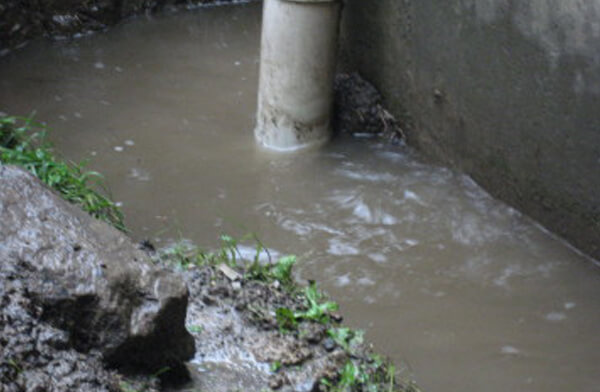Finding Hidden Water Line Leaks: Six Effective Detection Methods
Finding Hidden Water Line Leaks: Six Effective Detection Methods
Blog Article
What're your thoughts about Locating water leaks?

Early detection of dripping water lines can mitigate a potential calamity. Apart from saving you money, it will reduce the worry and disappointment. The moment you locate a leak, calling your plumber for repair work is the very best option. Some tiny water leakages may not be visible. Right here are some hacks that aid if you can not detect it with your naked eyes.
1. Take A Look At the Water Meter
Every house has a water meter. Inspecting it is a guaranteed manner in which aids you uncover leaks. For beginners, switch off all the water sources. Ensure no person will flush, make use of the tap, shower, run the washing maker or dish washer. From there, go to the meter and watch if it will alter. Considering that no person is using it, there should be no movements. If it moves, that suggests a fast-moving leakage. Likewise, if you spot no changes, wait an hour or two as well as inspect back once again. This implies you may have a slow-moving leakage that could even be below ground.
2. Check Water Consumption
Analyze your water costs and track your water intake. As the one paying it, you must notice if there are any inconsistencies. If you spot sudden changes, regardless of your consumption coinciding, it implies that you have leakages in your plumbing system. Remember, your water costs need to fall under the same range each month. An abrupt spike in your expense shows a fast-moving leakage.
On the other hand, a stable boost every month, despite the very same behaviors, reveals you have a slow-moving leak that's additionally gradually intensifying. Call a plumber to thoroughly examine your residential or commercial property, specifically if you feel a warm area on your flooring with piping below.
3. Do a Food Coloring Examination
When it concerns water intake, 30% originates from commodes. Test to see if they are running appropriately. Drop specks of food color in the container and wait 10 minutes. If the shade in some way infiltrates your dish throughout that time without flushing, there's a leak between the container and also bowl.
4. Asses Outside Lines
Don't neglect to inspect your outdoor water lines too. Should water permeate out of the connection, you have a loosened rubber gasket. One small leak can lose heaps of water and increase your water bill.
5. Assess the scenario as well as evaluate
Property owners need to make it a practice to inspect under the sink counters and also even inside cabinets for any kind of bad odor or mold growth. These two warnings show a leakage so prompt attention is called for. Doing regular evaluations, even bi-annually, can save you from a major problem.
If you know your home is currently old, maintain a careful eye on your heaters, tubes, pipelines and so on. Look for discolorations and weakening as a lot of pipes and appliances have a life span. They will likewise naturally wear away because of tear as well as wear. Do not wait for it to escalate if you think dripping water lines in your plumbing system. Call a professional plumber right away so you don't wind up with a horrible mess in your house.
Early discovery of dripping water lines can minimize a possible disaster. Some little water leakages may not be visible. Inspecting it is a surefire method that helps you discover leaks. One tiny leak can throw away lots of water and also spike your water costs.
If you think leaking water lines in your plumbing system, do not wait for it to intensify.
WARNING SIGNS OF WATER LEAKAGE BEHIND THE WALL
PERSISTENT MUSTY ODORS
As water slowly drips from a leaky pipe inside the wall, flooring and sheetrock stay damp and develop an odor similar to wet cardboard. It generates a musty smell that can help you find hidden leaks.
MOLD IN UNUSUAL AREAS
Mold usually grows in wet areas like kitchens, baths and laundry rooms. If you spot the stuff on walls or baseboards in other rooms of the house, it’s a good indicator of undetected water leaks.
STAINS THAT GROW
When mold thrives around a leaky pipe, it sometimes takes hold on the inside surface of the affected wall. A growing stain on otherwise clean sheetrock is often your sign of a hidden plumbing problem.
PEELING OR BUBBLING WALLPAPER / PAINT
This clue is easy to miss in rooms that don’t get much use. When you see wallpaper separating along seams or paint bubbling or flaking off the wall, blame sheetrock that stays wet because of an undetected leak.
BUCKLED CEILINGS AND STAINED FLOORS
If ceilings or floors in bathrooms, kitchens or laundry areas develop structural problems, don’t rule out constant damp inside the walls. Wet sheetrock can affect adjacent framing, flooring and ceilings.
https://www.servicemasterbyzaba.com/blog/how-to-detect-water-leakage-in-walls/

We hope you enjoyed reading our section on Finding hidden leaks. Thanks a lot for taking the time to browse our short article. For those who appreciated our blog entry kindly don't forget to pass it around. Thank you for taking the time to read it.
Best choice? Dial! Report this page